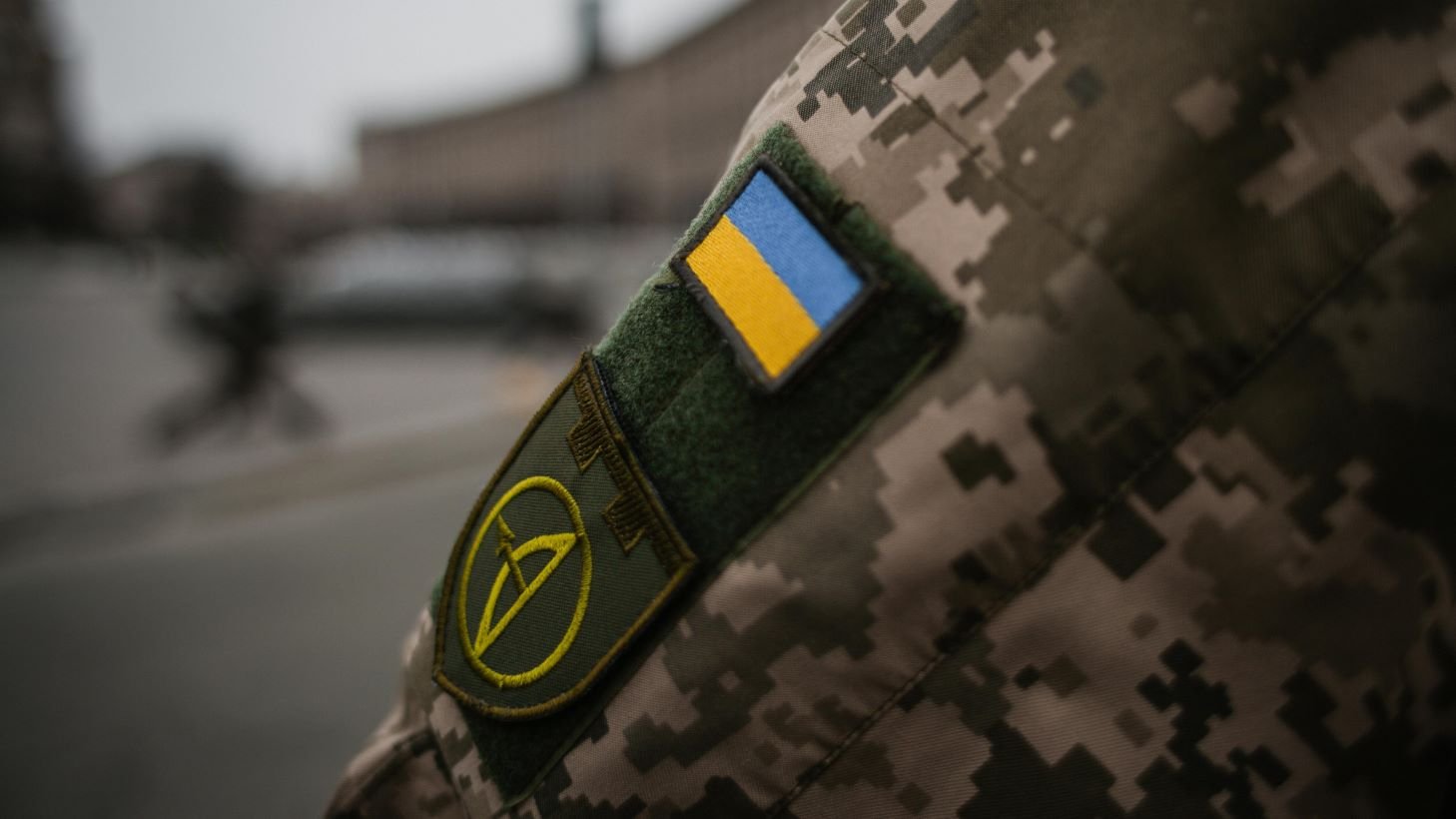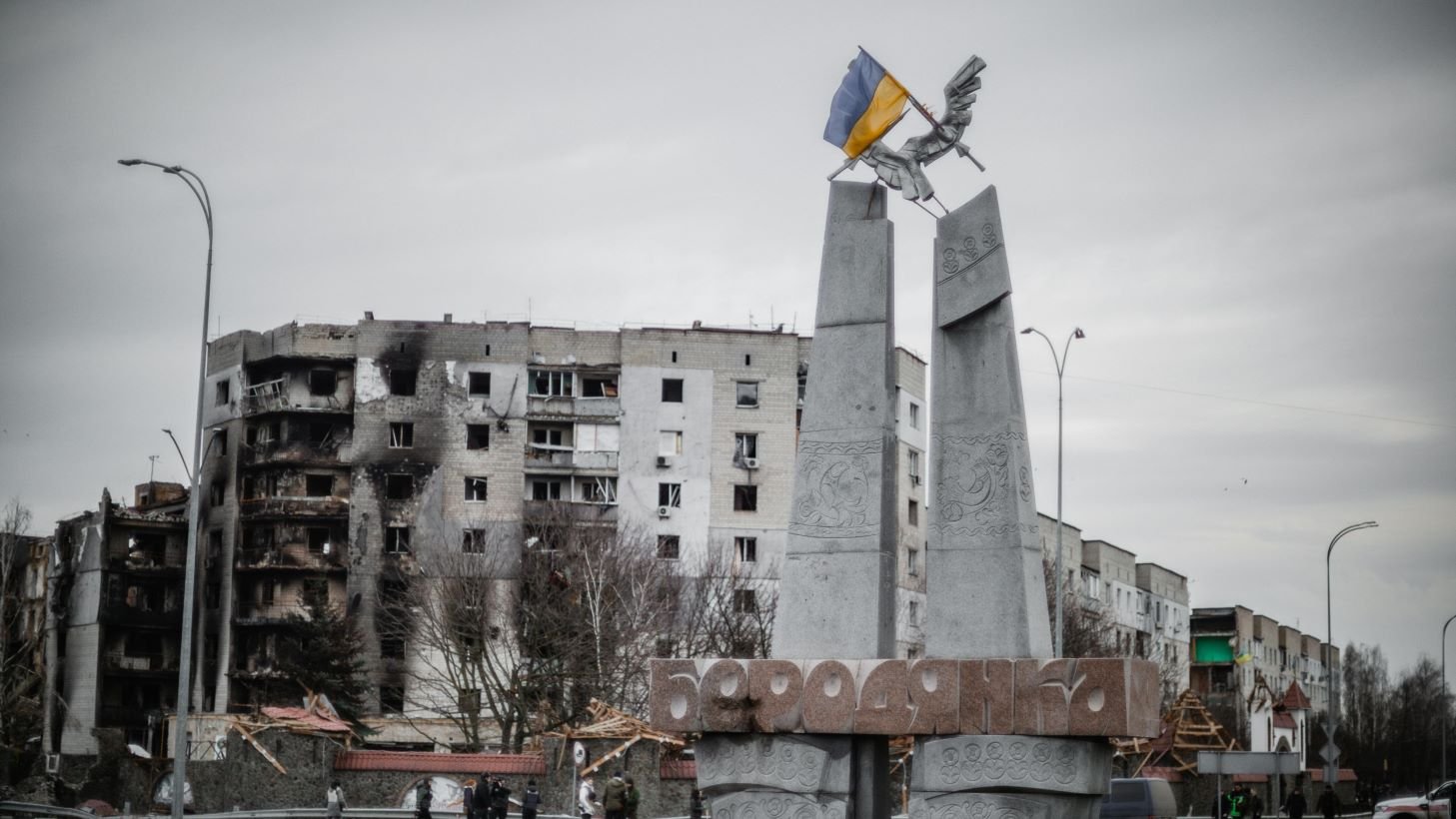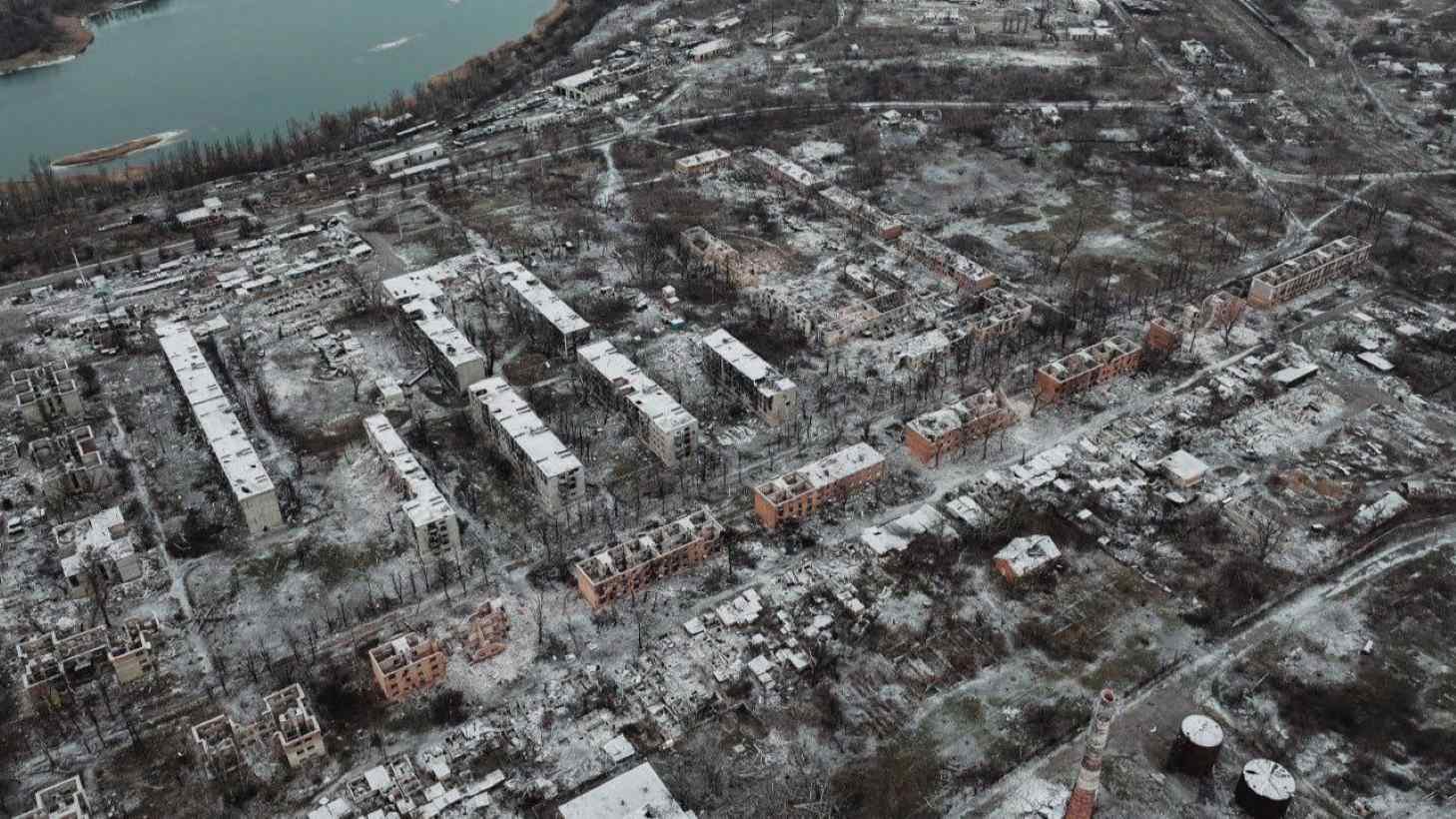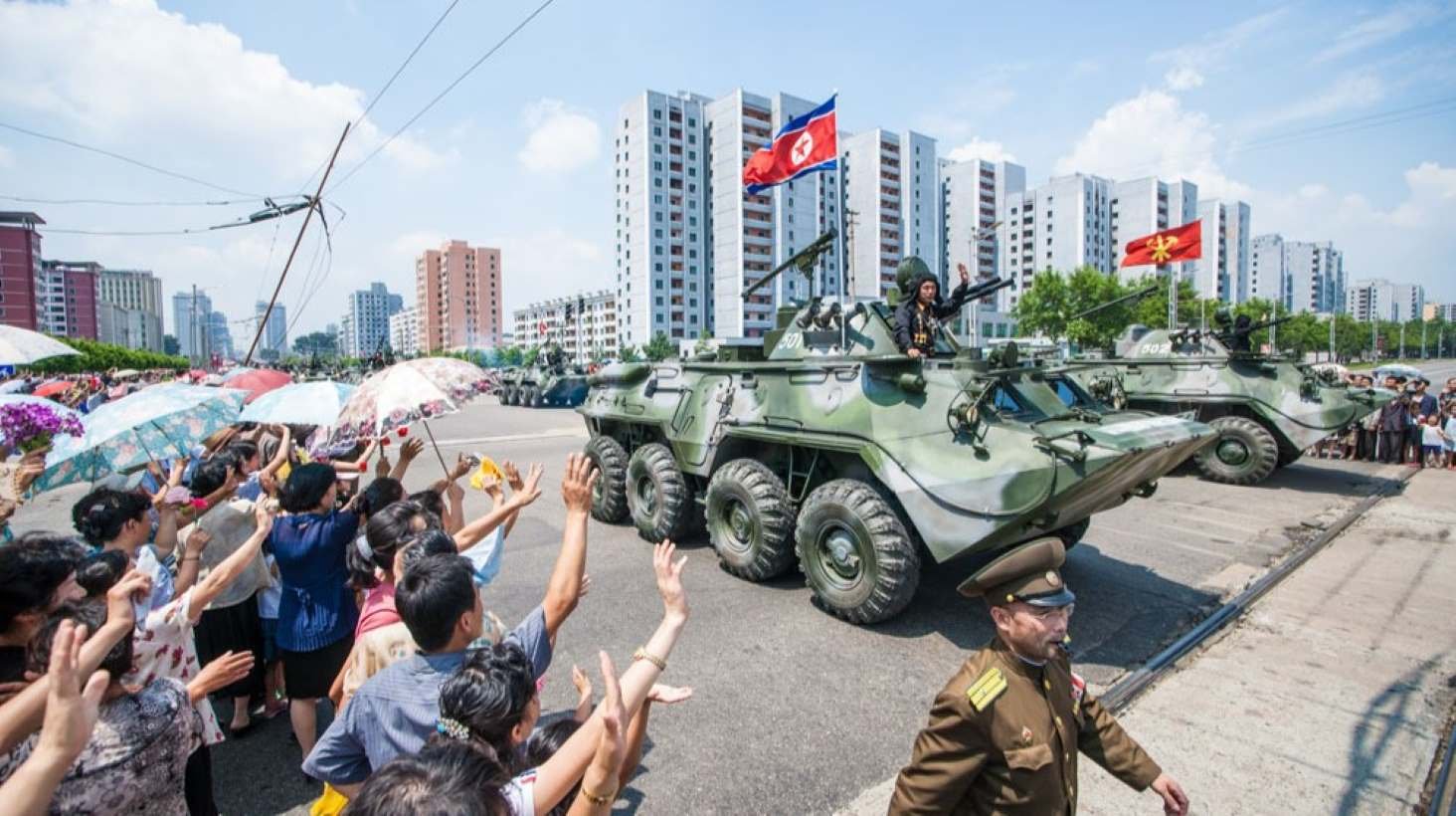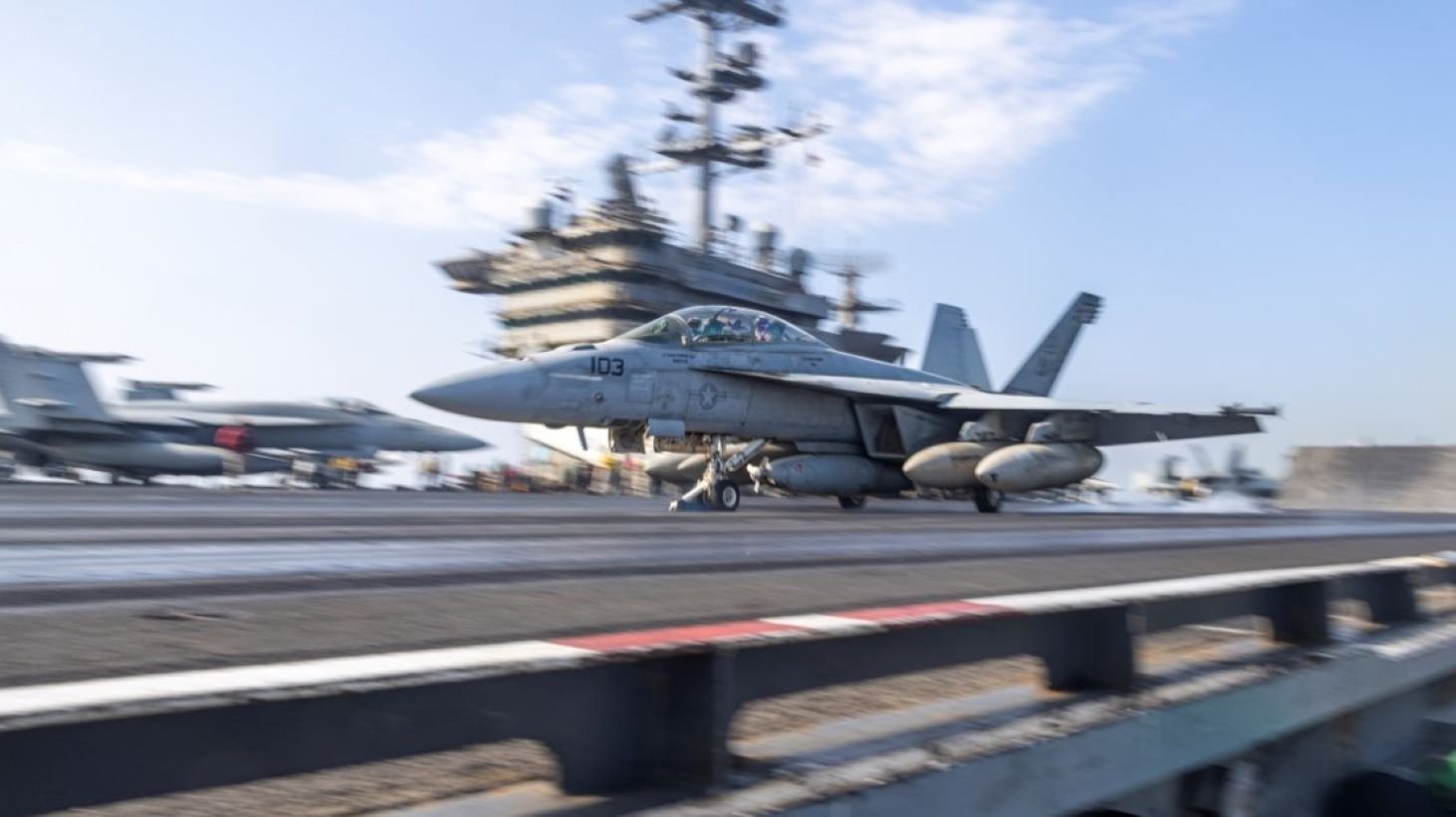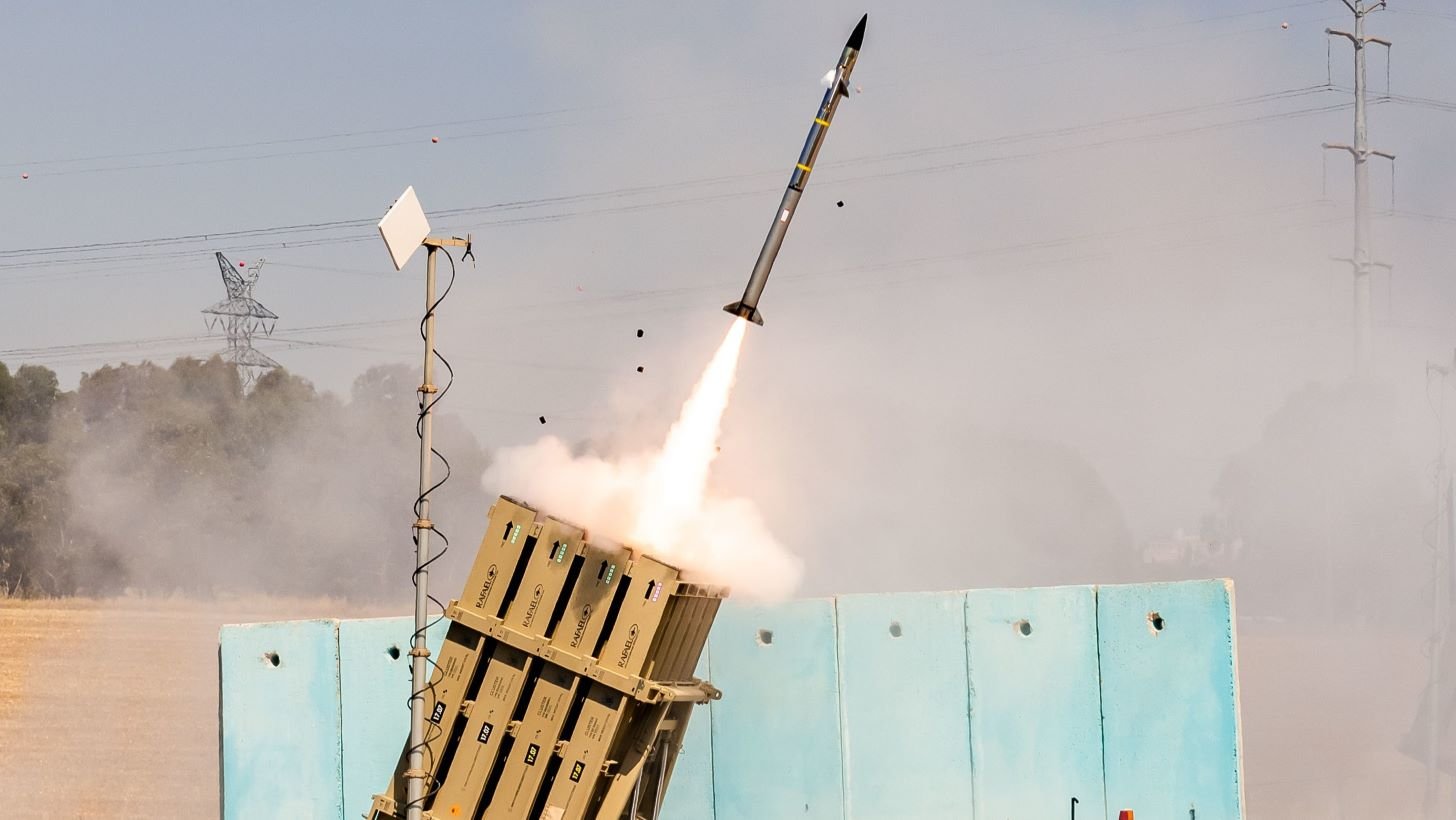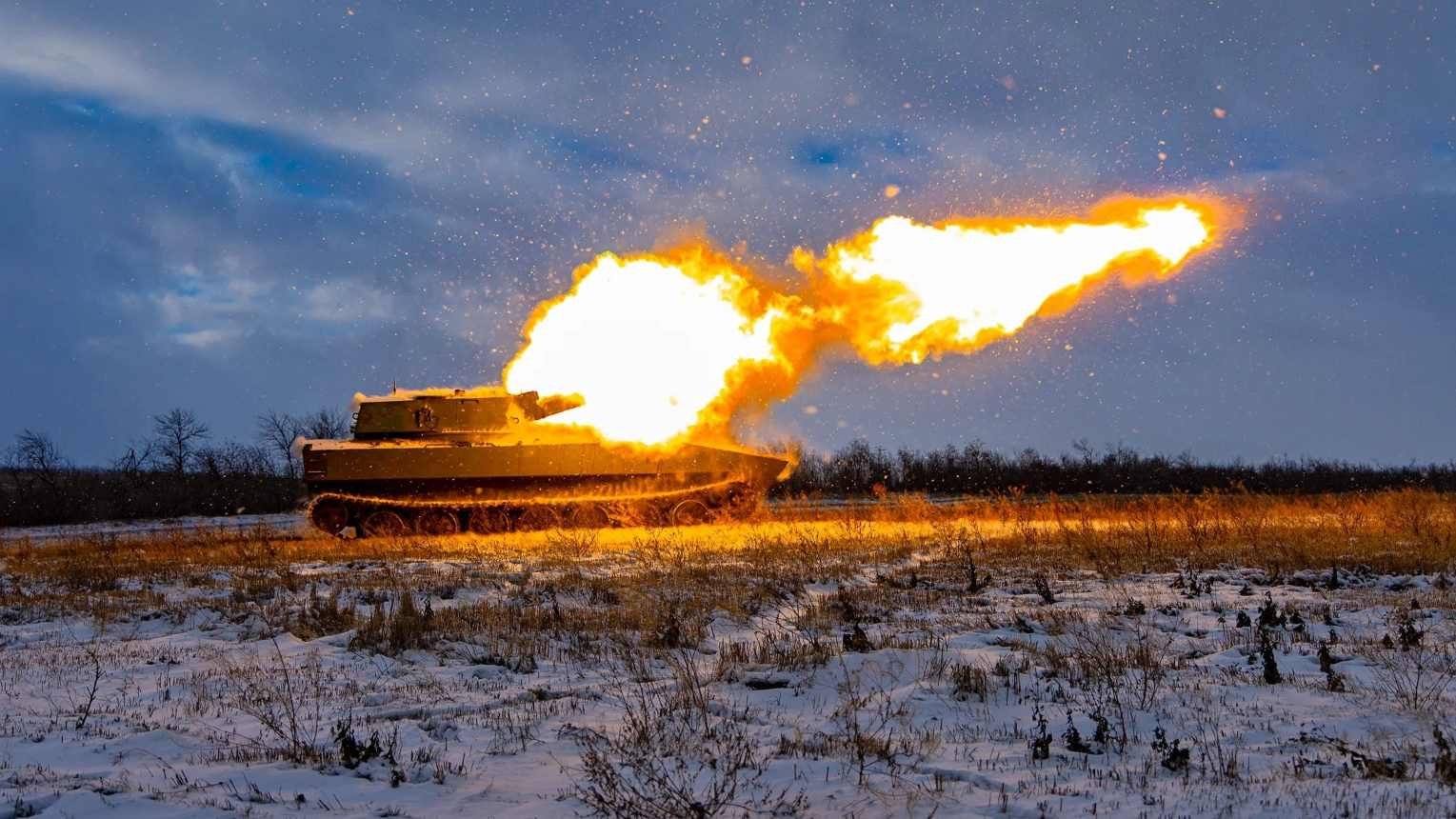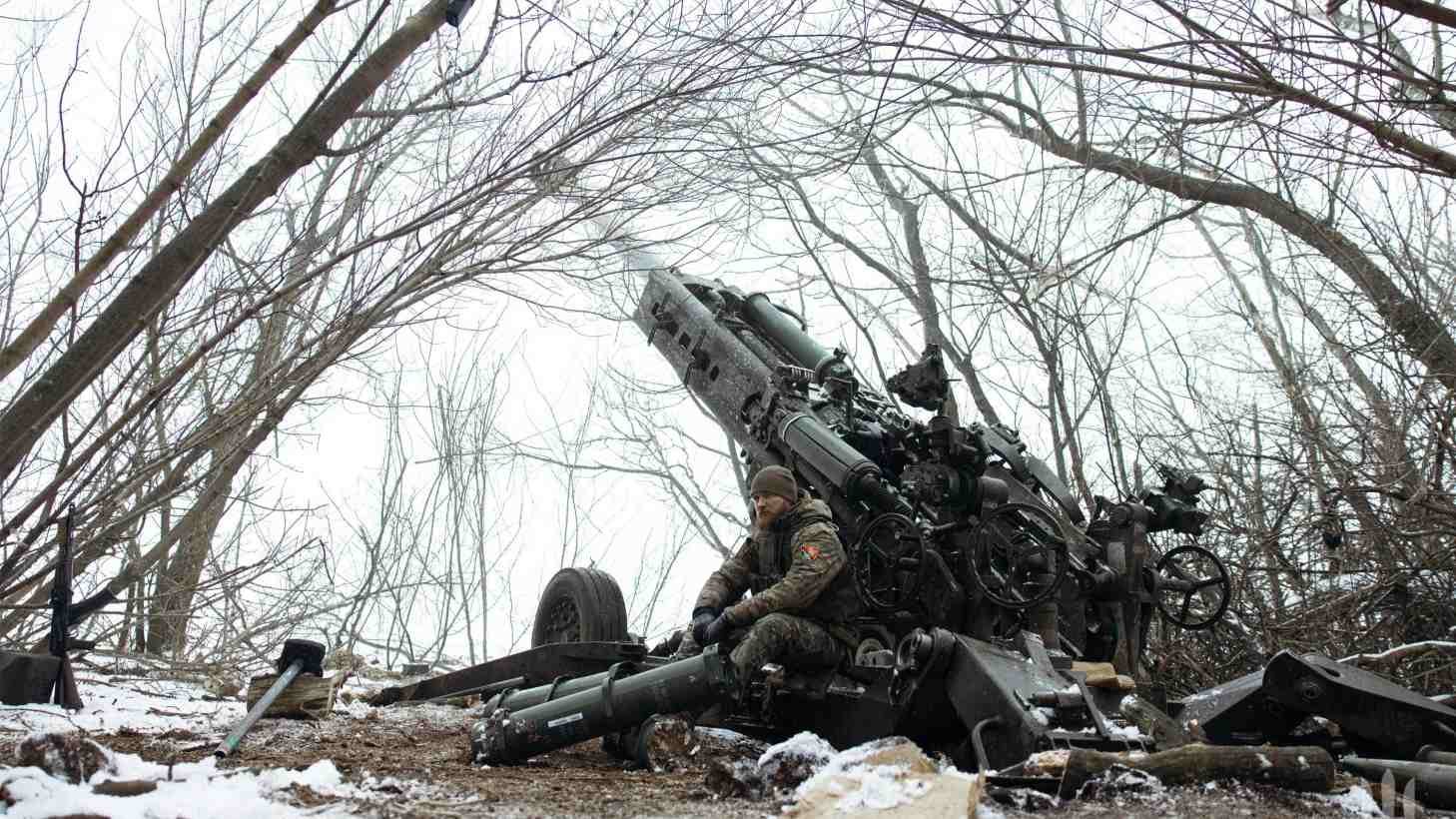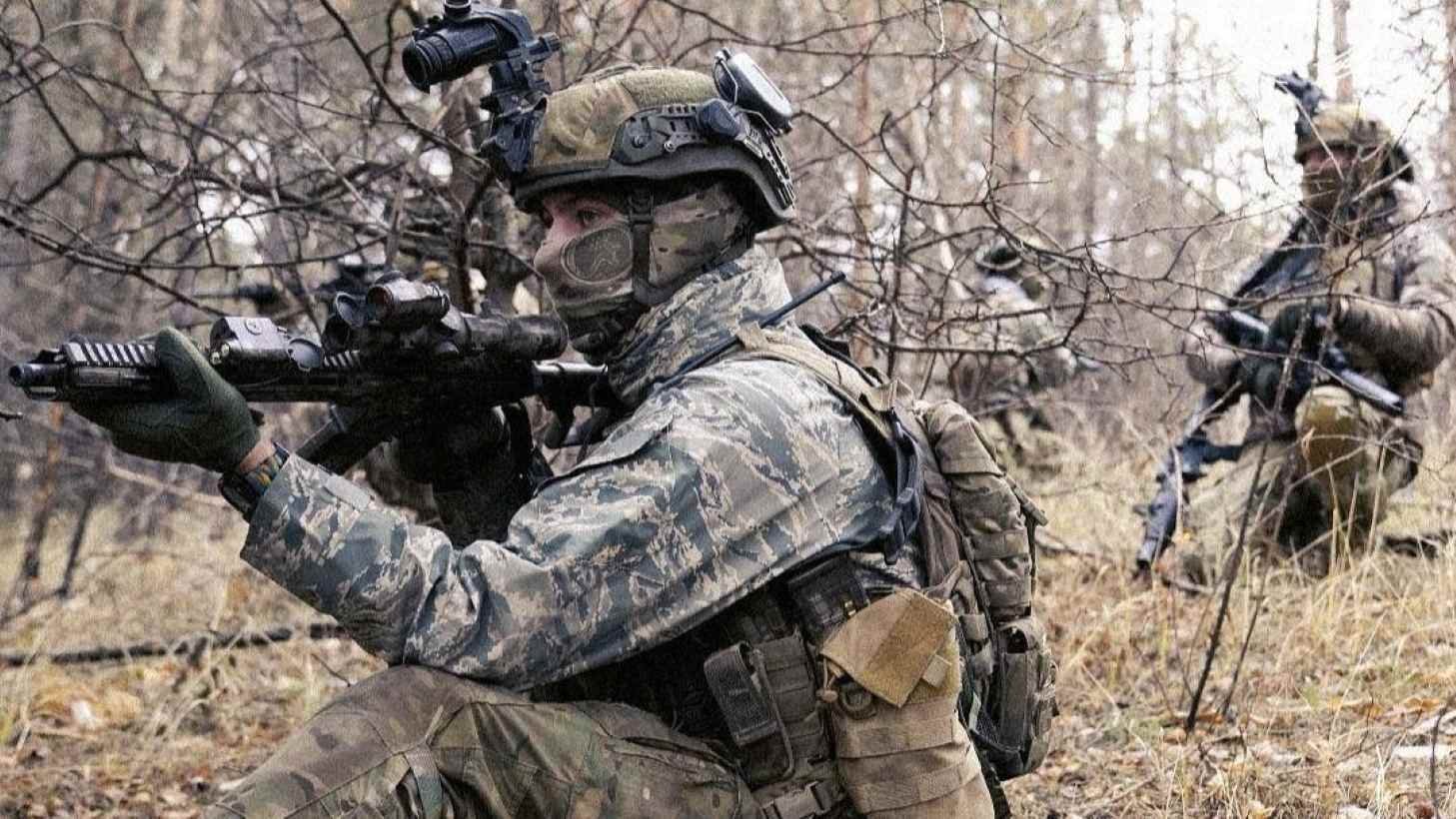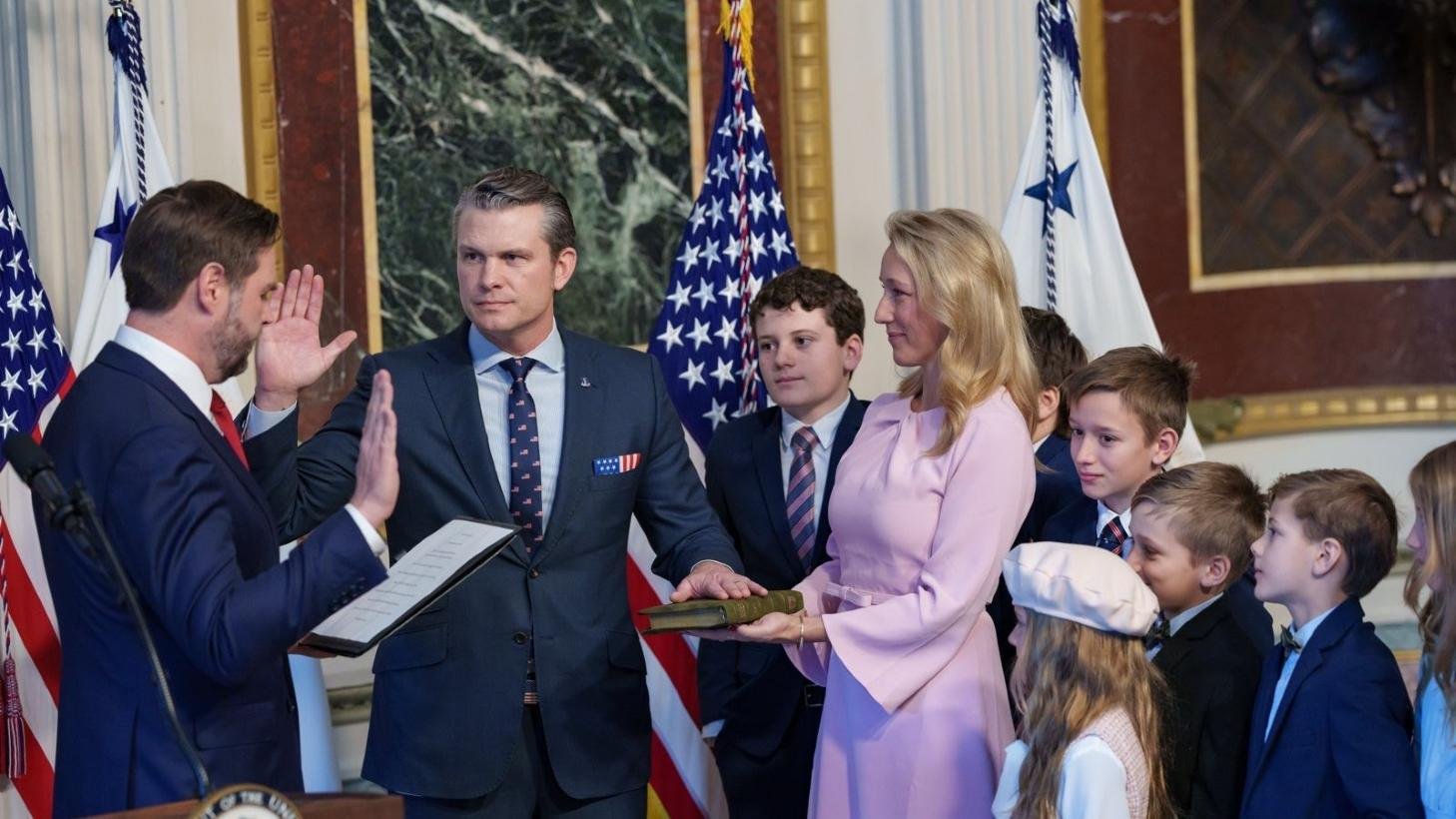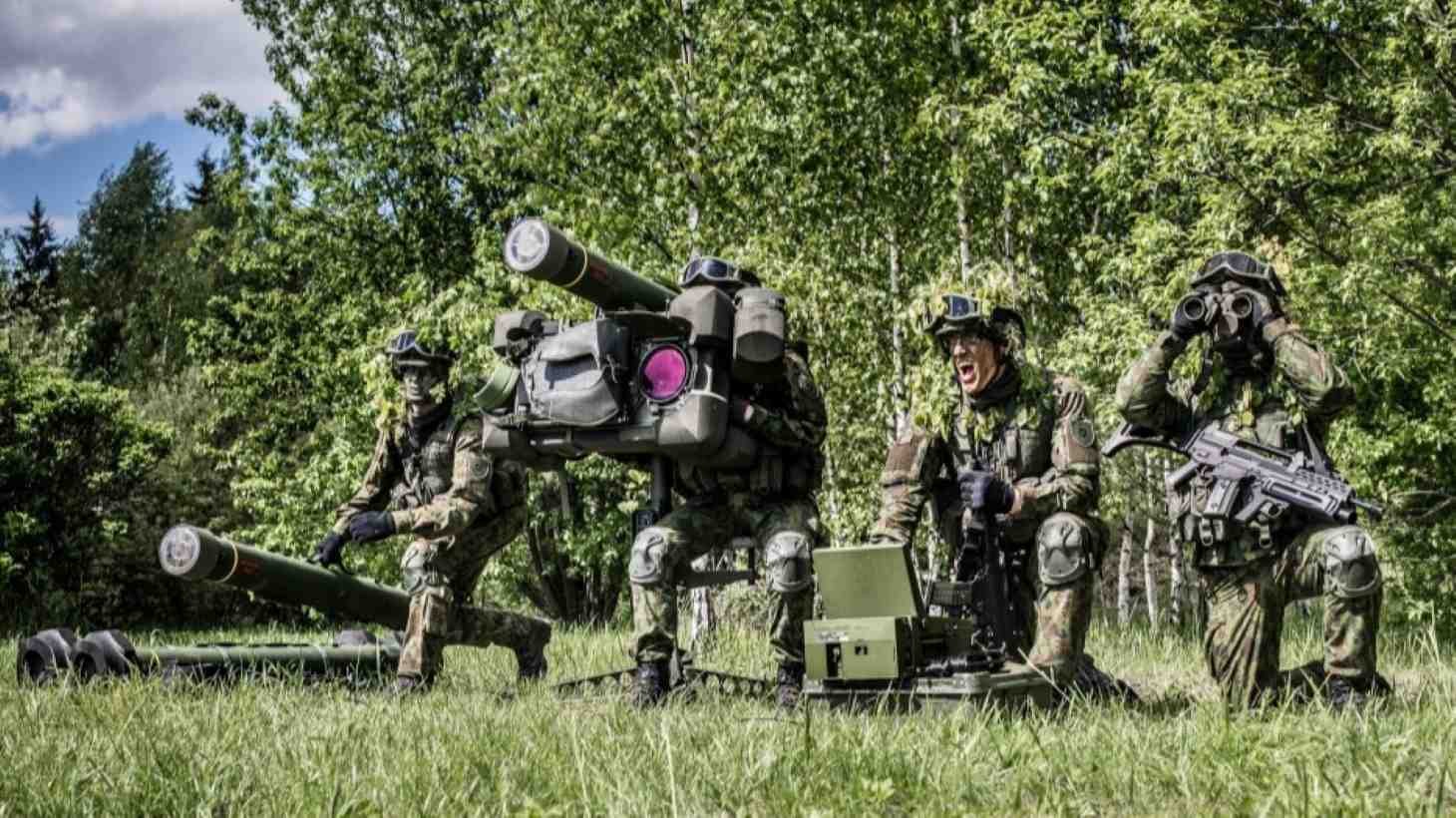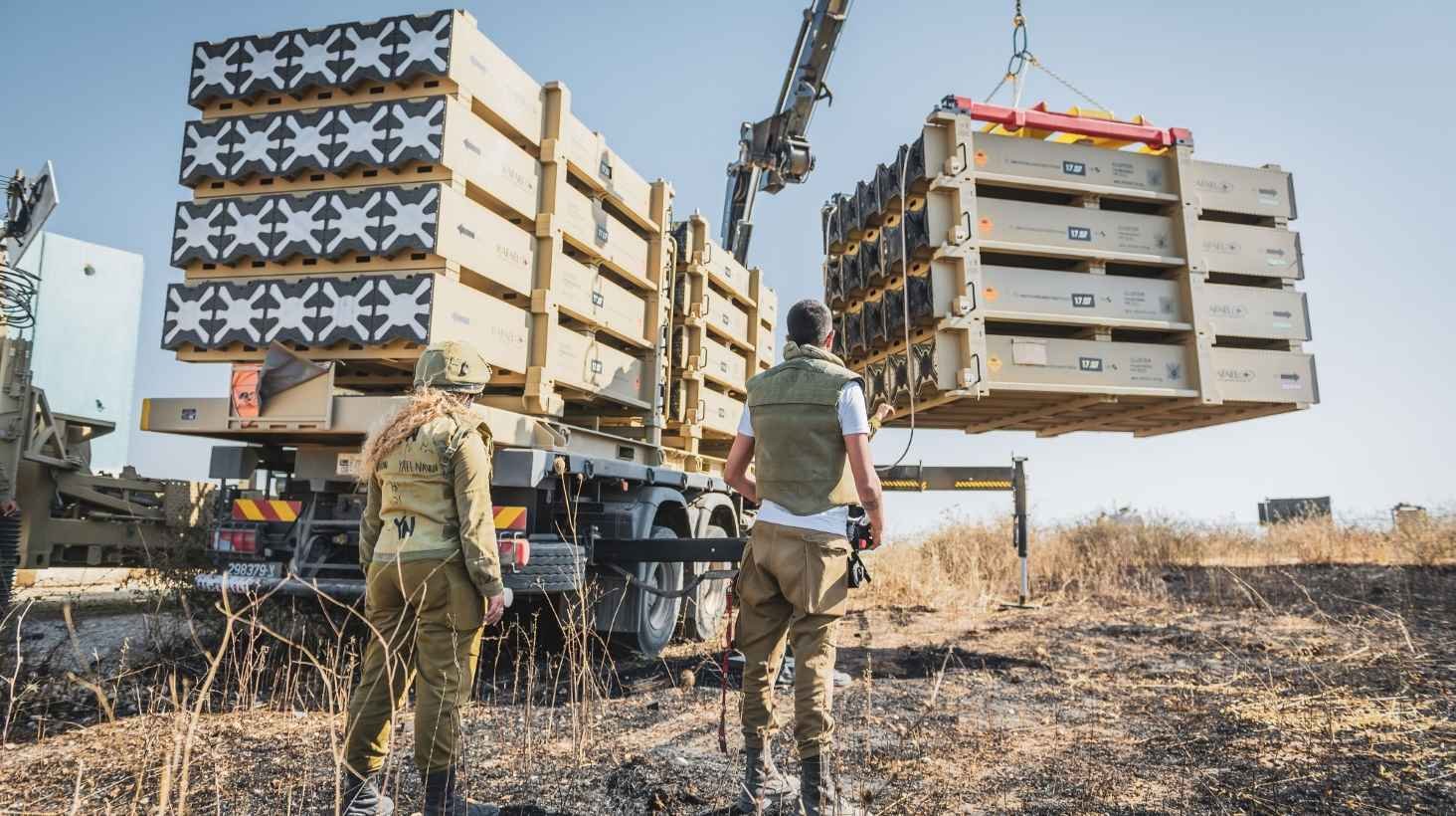-
Posts
790 -
Joined
-
Last visited
Content Type
Profiles
Uncrowned Armory News
Prepping Cookbook
Conspiracy Theories
Uncrowned Tactical Sports News
Prepping
Forums
Events
Everything posted by Uncrowned Guard
-
Ukrainian Military Embarks on Overhaul: Zelensky Targets Modernization The Ukrainian Armed Forces are on the precipice of a comprehensive structural transformation aimed toward significant modernization. On February 3rd, President Volodymyr Zelensky gave the green light to an elaborate plan that signals a new organizational era in defense. Adopting the Corps System: A Step Forward It follows the public endorsement of the corps system by Commander-in-Chief Oleksandr Syrskyi, who marked this approach as pivotal to meeting the contemporary challenges of the Ukrainian military. Syrskyi had been explicit about his vision that revamping the structure of the armed forces and making a successful transition toward a corps-centric system are not just desirable, but necessary. According to President Zelensky, the proposed transformation has already gotten approval, and “A plan has already been approved to transition to a new organizational structure of the Armed Forces of Ukraine." The focus now, corroborates Zelensky, is on the efficient implementation of the proposed structural changes. The president reinforced his conviction in the project's potential, stating emphatically, "We need the corps system." Corps Commanders at The Helm: Leading The Change Zelensky briefly outlined the new command structure during his announcement. He explained, "Today we discussed approaches to the appointment of corps commanders: these should be the best-trained, most promising officers with combat experience and modern thinking. The army must be modern." The specific decisions regarding the structural reorganization are yet to be revealed to the public but will be communicated in due course as assured by Zelensky. Syrskyi asserted the same day that these organizational reforms were already set in motion, with the ultimate goal to fortify the Armed Forces amid the complexities of contemporary conflict conditions. This development comes at a time when Ukrainian military units are severely outnumbered by Russian forces in several areas of the contested front lines. Despite the daunting circumstances, Ukraine grapples with a range of issues, such as personnel scandals, mismanaged brigades, an ongoing mobilization crisis, and uncertainty over future U.S. military aid. Amid adversity, this shift in military structure is perceived as a step closer to creating a modern and competent force capable of countering the manifold challenges facing Ukraine.
-
- ukrainian armed forces
- military modernization
- (and 3 more)
-
Ukrainian Military Embarks on Overhaul: Zelensky Targets Modernization The Ukrainian Armed Forces are on the precipice of a comprehensive structural transformation aimed toward significant modernization. On February 3rd, President Volodymyr Zelensky gave the green light to an elaborate plan that signals a new organizational era in defense. Adopting the Corps System: A Step Forward It follows the public endorsement of the corps system by Commander-in-Chief Oleksandr Syrskyi, who marked this approach as pivotal to meeting the contemporary challenges of the Ukrainian military. Syrskyi had been explicit about his vision that revamping the structure of the armed forces and making a successful transition toward a corps-centric system are not just desirable, but necessary. According to President Zelensky, the proposed transformation has already gotten approval, and “A plan has already been approved to transition to a new organizational structure of the Armed Forces of Ukraine." The focus now, corroborates Zelensky, is on the efficient implementation of the proposed structural changes. The president reinforced his conviction in the project's potential, stating emphatically, "We need the corps system." Corps Commanders at The Helm: Leading The Change Zelensky briefly outlined the new command structure during his announcement. He explained, "Today we discussed approaches to the appointment of corps commanders: these should be the best-trained, most promising officers with combat experience and modern thinking. The army must be modern." The specific decisions regarding the structural reorganization are yet to be revealed to the public but will be communicated in due course as assured by Zelensky. Syrskyi asserted the same day that these organizational reforms were already set in motion, with the ultimate goal to fortify the Armed Forces amid the complexities of contemporary conflict conditions. This development comes at a time when Ukrainian military units are severely outnumbered by Russian forces in several areas of the contested front lines. Despite the daunting circumstances, Ukraine grapples with a range of issues, such as personnel scandals, mismanaged brigades, an ongoing mobilization crisis, and uncertainty over future U.S. military aid. Amid adversity, this shift in military structure is perceived as a step closer to creating a modern and competent force capable of countering the manifold challenges facing Ukraine. View full article
-
- ukrainian armed forces
- military modernization
- (and 3 more)
-

Trump's Bargain: Rare Minerals for Aid in Ukraine
Uncrowned Guard posted an article in Ongoing Conflicts
Trump Asks for Ukrainian Rare Minerals as Precondition for Aid: Kyiv Considers it Favorable As reported by Kyiv Independent, President Trump apparently revealed his interest in gaining access to Ukraine's pool of rare minerals in exchange for the U.S. providing monetary aid for the war-affected nation. He shed light on this proposal during a discussion with journalists in the White House's Oval Office on the 3rd of February. President's Office: No Official Word Yet The U.S. President did not clarify the specifics regarding the materials that Washington seeks to obtain from Kyiv. There was no immediate official confirmation of any finalized agreements about this exchange. However, a reliable contact from the President's Office revealed to the Kyiv Independent that the notion of sharing Ukraine's rich natural resources with its strategic partners forms a fundamental component of President Volodymyr Zelensky's 'victory plan.' This strategy has been presented to multiple foreign dignitaries, including President Trump. Aid Distribution Under Scrutiny Amidst Ongoing War Situation Trump's declaration arrives at a time when there are persistent questions about the U.S.'s continued financial support to Ukraine. President Volodymyr Zelensky affirmed during a recent press briefing with Moldovan President Maia Sandu on January 25th, that the military assistance, tallying to $65.9 billion since Russia's full-blown invasion in February 2022, is not endangered by any funding blockade. Nevertheless, the U.S. Agency for International Development's (USAID) initiatives in Ukraine have experienced a financial vacuum as a consequence of the new U.S. executive's actions. From the time Russia initiated its all-out invasion, USAID has channeled $2.6 billion for humanitarian relief, $5 billion for developmental aid, and more than $30 billion in direct fiscal support to Ukraine. Presently, the Ukrainian parliamentary humanitarian and information policy committee has started exploratory talks with its European associates to substitute the U.S. financial aid facilitated through USAID temporarily, at least until any formal agreement is established regarding the plan proposed by President Trump.-
- trump ukraine aid
- rare minerals trade
- (and 3 more)
-
Trump Asks for Ukrainian Rare Minerals as Precondition for Aid: Kyiv Considers it Favorable As reported by Kyiv Independent, President Trump apparently revealed his interest in gaining access to Ukraine's pool of rare minerals in exchange for the U.S. providing monetary aid for the war-affected nation. He shed light on this proposal during a discussion with journalists in the White House's Oval Office on the 3rd of February. President's Office: No Official Word Yet The U.S. President did not clarify the specifics regarding the materials that Washington seeks to obtain from Kyiv. There was no immediate official confirmation of any finalized agreements about this exchange. However, a reliable contact from the President's Office revealed to the Kyiv Independent that the notion of sharing Ukraine's rich natural resources with its strategic partners forms a fundamental component of President Volodymyr Zelensky's 'victory plan.' This strategy has been presented to multiple foreign dignitaries, including President Trump. Aid Distribution Under Scrutiny Amidst Ongoing War Situation Trump's declaration arrives at a time when there are persistent questions about the U.S.'s continued financial support to Ukraine. President Volodymyr Zelensky affirmed during a recent press briefing with Moldovan President Maia Sandu on January 25th, that the military assistance, tallying to $65.9 billion since Russia's full-blown invasion in February 2022, is not endangered by any funding blockade. Nevertheless, the U.S. Agency for International Development's (USAID) initiatives in Ukraine have experienced a financial vacuum as a consequence of the new U.S. executive's actions. From the time Russia initiated its all-out invasion, USAID has channeled $2.6 billion for humanitarian relief, $5 billion for developmental aid, and more than $30 billion in direct fiscal support to Ukraine. Presently, the Ukrainian parliamentary humanitarian and information policy committee has started exploratory talks with its European associates to substitute the U.S. financial aid facilitated through USAID temporarily, at least until any formal agreement is established regarding the plan proposed by President Trump. View full article
-
- trump ukraine aid
- rare minerals trade
- (and 3 more)
-
U.N. Reports Rising Count of POW Executions by Russian Forces In a concerning development, the U.N. Human Rights Monitoring Mission in Ukraine has expressed alarm over an escalating number of Ukrainian prisoners of war (POWs) executions carried out by Russian forces. This revelation was made public in a press statement secured by the Kyiv Independent. The U.N. mission has documented a staggering 79 executions spanning 24 different incidents since late August 2024, with suggestions hinting at the possibility of group executions taking place within these figures. Unraveling Russian Violations of the Geneva Conventions Ukrainian authorities have indicated a widespread contravention of the Geneva Conventions by Russian forces during the conflict. In an interaction with Ukrainska Pravda, Ukraine's Ombudsman Dmytro Lubinets revealed that by mid-December 2024, 177 executions of captive Ukrainian soldiers had been logged, with 109 of these taking place within the previous year. The mission's report includes evidence gathered from witness testimonies and analysis of visual content detailing the deaths of Ukrainian POWs, divulged by Ukrainian and Russian sources. Interestingly, the mission reported a case where an injured, but unapprehended, Russian soldier was executed by the Ukrainian forces in 2024, to which Kyiv has not responded. The report also reveals that a large number of Ukrainian soldiers who surrendered or were under Russian custody were executed on the spot, including unarmed and wounded personnel. Locations of reported executions largely overlap with continued Russian offensive operations. Call for Inhumane Treatment from Russian Public Figures The mission's head, Danielle Bell, has voiced concern over explicit calls for the inhumane treatment and execution of captive Ukrainian soldiers by Russian public personalities, with a minimum of three such instances plus social media posts from groups linked to the Russian military documented. Asserting that such occurrences are not isolated incidents, Bell has called for comprehensive investigations into all reports of Ukrainian military personnel executions and public statements endorsing such actions. The mission's statement categorically brands the declaration of "no quarter" as a serious infringement of international humanitarian law and constituted a war crime. Identification of Ukrainian Soldier in Gruesome Photo Ukrainian Commissioner for Persons Missing in Special Circumstances, Artur Dobroserdov, announced on 3rd February, the preliminary identification of a decapitated Ukrainian serviceman, images of whom had been disseminated online by Russian sources. The disturbing photo depicts the severed head of a Ukrainian soldier held, presumably, by a Russian soldier. Further investigation into the incident's surroundings, locating the body, and obtaining additional details is being undertaken by the National Police, as per Dobroserdov. He pleaded with the public to refrain from circulating unverified information and to trust only authoritative sources. The National Police is also responsible for locating the soldier's relatives and examining the case while Ukrainian authorities are cataloging yet another violation of international humanitarian law by Russia. Dobroserdov relayed that the country's Prosecutor General's Office had been apprised of the incident, falling within the ongoing effort to document Russian war crimes.
-
- pow executions
- geneva conventions violations
- (and 3 more)
-
U.N. Reports Rising Count of POW Executions by Russian Forces In a concerning development, the U.N. Human Rights Monitoring Mission in Ukraine has expressed alarm over an escalating number of Ukrainian prisoners of war (POWs) executions carried out by Russian forces. This revelation was made public in a press statement secured by the Kyiv Independent. The U.N. mission has documented a staggering 79 executions spanning 24 different incidents since late August 2024, with suggestions hinting at the possibility of group executions taking place within these figures. Unraveling Russian Violations of the Geneva Conventions Ukrainian authorities have indicated a widespread contravention of the Geneva Conventions by Russian forces during the conflict. In an interaction with Ukrainska Pravda, Ukraine's Ombudsman Dmytro Lubinets revealed that by mid-December 2024, 177 executions of captive Ukrainian soldiers had been logged, with 109 of these taking place within the previous year. The mission's report includes evidence gathered from witness testimonies and analysis of visual content detailing the deaths of Ukrainian POWs, divulged by Ukrainian and Russian sources. Interestingly, the mission reported a case where an injured, but unapprehended, Russian soldier was executed by the Ukrainian forces in 2024, to which Kyiv has not responded. The report also reveals that a large number of Ukrainian soldiers who surrendered or were under Russian custody were executed on the spot, including unarmed and wounded personnel. Locations of reported executions largely overlap with continued Russian offensive operations. Call for Inhumane Treatment from Russian Public Figures The mission's head, Danielle Bell, has voiced concern over explicit calls for the inhumane treatment and execution of captive Ukrainian soldiers by Russian public personalities, with a minimum of three such instances plus social media posts from groups linked to the Russian military documented. Asserting that such occurrences are not isolated incidents, Bell has called for comprehensive investigations into all reports of Ukrainian military personnel executions and public statements endorsing such actions. The mission's statement categorically brands the declaration of "no quarter" as a serious infringement of international humanitarian law and constituted a war crime. Identification of Ukrainian Soldier in Gruesome Photo Ukrainian Commissioner for Persons Missing in Special Circumstances, Artur Dobroserdov, announced on 3rd February, the preliminary identification of a decapitated Ukrainian serviceman, images of whom had been disseminated online by Russian sources. The disturbing photo depicts the severed head of a Ukrainian soldier held, presumably, by a Russian soldier. Further investigation into the incident's surroundings, locating the body, and obtaining additional details is being undertaken by the National Police, as per Dobroserdov. He pleaded with the public to refrain from circulating unverified information and to trust only authoritative sources. The National Police is also responsible for locating the soldier's relatives and examining the case while Ukrainian authorities are cataloging yet another violation of international humanitarian law by Russia. Dobroserdov relayed that the country's Prosecutor General's Office had been apprised of the incident, falling within the ongoing effort to document Russian war crimes. View full article
-
- pow executions
- geneva conventions violations
- (and 3 more)
-
North Korean Troops Retreat from Kursk Region Revealed by Ukraine The Ukraine's Special Operations Forces (SSO) has validated the withdrawal of North Korean forces previously stationed along Russia’s Kursk front. The Last Sighting of Invaders The SSO spokesperson, Colonel Oleksandr Kindratenko, stated that North Korean troops were last spotted approximately three weeks ago in the region. Specifically, Kindratenko noted, “Special Operations Forces report only on areas where our units operate. In this respect, it is pertinent to mention that North Korean troops have seemingly disappeared for nearly three weeks. Likely due to heavy losses, they seemed to have been compelled to pull back.” This statement was conveyed in an interview with the Ukrainian publication, Ukrainska Pravda. U.S and Ukraine Officials Reflect on North Korean Withdrawal Further input, including from independent sources such as The New York Times, seemingly corroborates the narrative. The publication, while citing U.S. and Ukrainian officials, duly noted that significant losses had contributed to the removal of the North Korean unit from frontline positions in Kursk. However, amidst the withdrawal specifics, U.S. officials hint at a potentiality where this withdrawal may not be a permanent occurrence. Their viewpoint predicates that post additional training, North Korean forces could yet redeploy, especially if Russian commanders devise methods to mitigate further casualties. North Korean Troops in Russia: A Historical Overview In hindsight, November 2023 marked the induction of approximately 11,000 North Korean troops into the Russian territory. This influx resulted in mounting tensions among Ukraine and its Western allies concerning potential war escalation. According to the Ukrainian Military Chief General Oleksandr Syrsky, the North Korean troops' count dwindled by half in just the span of three months. Ukrainian officials, while acknowledging the fierceness of the North Korean soldiers, highlighted the unit's lack of synergy with Russian forces resulting in unprecedented casualties. Reports from Ukrainian frontline troops and officials expound on the limited armored support and rare retreats or regrouping instances, further fueling casualties within the North Korean troops. Uncertainty Looms Over Future North Korean Involvement Despite their noted withdrawal from Kursk, North Korean participation in ongoing and future warfare remains ambiguous. As Russia continues to face military pressure and depleting ranks, experts warn of Russia potentially reinforcing their battlefronts with additional foreign deployments - North Korean personnel being a strong possibility.
-
- north korean troops
- kursk region
- (and 3 more)
-
North Korean Troops Retreat from Kursk Region Revealed by Ukraine The Ukraine's Special Operations Forces (SSO) has validated the withdrawal of North Korean forces previously stationed along Russia’s Kursk front. The Last Sighting of Invaders The SSO spokesperson, Colonel Oleksandr Kindratenko, stated that North Korean troops were last spotted approximately three weeks ago in the region. Specifically, Kindratenko noted, “Special Operations Forces report only on areas where our units operate. In this respect, it is pertinent to mention that North Korean troops have seemingly disappeared for nearly three weeks. Likely due to heavy losses, they seemed to have been compelled to pull back.” This statement was conveyed in an interview with the Ukrainian publication, Ukrainska Pravda. U.S and Ukraine Officials Reflect on North Korean Withdrawal Further input, including from independent sources such as The New York Times, seemingly corroborates the narrative. The publication, while citing U.S. and Ukrainian officials, duly noted that significant losses had contributed to the removal of the North Korean unit from frontline positions in Kursk. However, amidst the withdrawal specifics, U.S. officials hint at a potentiality where this withdrawal may not be a permanent occurrence. Their viewpoint predicates that post additional training, North Korean forces could yet redeploy, especially if Russian commanders devise methods to mitigate further casualties. North Korean Troops in Russia: A Historical Overview In hindsight, November 2023 marked the induction of approximately 11,000 North Korean troops into the Russian territory. This influx resulted in mounting tensions among Ukraine and its Western allies concerning potential war escalation. According to the Ukrainian Military Chief General Oleksandr Syrsky, the North Korean troops' count dwindled by half in just the span of three months. Ukrainian officials, while acknowledging the fierceness of the North Korean soldiers, highlighted the unit's lack of synergy with Russian forces resulting in unprecedented casualties. Reports from Ukrainian frontline troops and officials expound on the limited armored support and rare retreats or regrouping instances, further fueling casualties within the North Korean troops. Uncertainty Looms Over Future North Korean Involvement Despite their noted withdrawal from Kursk, North Korean participation in ongoing and future warfare remains ambiguous. As Russia continues to face military pressure and depleting ranks, experts warn of Russia potentially reinforcing their battlefronts with additional foreign deployments - North Korean personnel being a strong possibility. View full article
-
- north korean troops
- kursk region
- (and 3 more)
-
U.S. Military Executes Airstrikes Against Islamic State in Somalia The U.S. military recently orchestrated airstrikes against Islamic State operatives in Somalia. Initiated during President Donald Trump's second term, these strikes are the first in the African Nation. Defense Secretary Pete Hegseth confirmed on Saturday that these strikes, carried out by U.S. Africa Command, were instructed by Trump and coordinated with the Somali government. The Pentagon’s initial assessment indicates a successful operation with “multiple” operatives eliminated and no civilian casualties reported. President Trump took to social media revealing that the operation targeted a senior IS planner and recruits. However, the White House hasn’t clarified whether the mentioned IS planner was killed in the strike or revealed his identity. Somalia’s Reaction and the Importance of the Strikes Hassan Sheikh Mohamud, Somalia's president, praised the operation, portraying it as a reinforcement of the “strong security partnership” between the U.S. and Somalia against “extremist threats.” The President of Somalia commended their ally's assistance in their collective terror elimination and regional stability efforts. The operation consisted of several airstrikes launched in northern Somalia. These are targeting the Islamic State's branch in the African nation. Currently, this is the largest announced military operation of Trump's second term. The attacks, which occurred as specified within the Gholis mountain range in Somalia’s Puntland state, were successful in eliminating “multiple” ISIS operatives, according to AFRICOM. Details of the Military Operation in Somalia While specifics about the military assets used in the operation remain undisclosed, released AFRICOM imagery features Carrier Air Wing 1 in the USS Harry S. Truman. The Truman Carrier Strike Group has been in action for several weeks in the Red Sea, Yemen, and Somalia waters countering the Houthi movement in Yemen. AFRICOM reported no civilian casualties, however, further specific details of the operation remain undisclosed. Somali President Hassan Sheikh Mohamud confirmed the airstrikes and his awareness of the operation relayed by the United States. The U.S. military operation in Somalia trails an airstrike executed in northwest Syria on Jan. 30. This earlier operation successfully eliminated a leader of the al-Qaeda affiliate group Hurras-al-Din, marking the first announced military action under Trump’s administration. During his previous term, President Trump directed numerous drone strikes, airstrikes, and special operations missions inside Somalia — a total of 219 operations. Defense Secretary Pete Hegseth’s Statement In a statement, Defense Secretary Pete Hegseth addressed the successful U.S. Africa Command strikes in Somalia. Directed by Trump and coordinated with the Somali Federal Government, the coordinated airstrikes did target ISIS-Somalia operatives in the Golis mountains. The Secretary asserted that these actions degrade ISIS's ability to plot and carry out terrorist attacks, thus protecting U.S. citizens, their partners, and innocent civilians.
-
- us military
- airstrikes
-
(and 3 more)
Tagged with:
-
U.S. Military Executes Airstrikes Against Islamic State in Somalia The U.S. military recently orchestrated airstrikes against Islamic State operatives in Somalia. Initiated during President Donald Trump's second term, these strikes are the first in the African Nation. Defense Secretary Pete Hegseth confirmed on Saturday that these strikes, carried out by U.S. Africa Command, were instructed by Trump and coordinated with the Somali government. The Pentagon’s initial assessment indicates a successful operation with “multiple” operatives eliminated and no civilian casualties reported. President Trump took to social media revealing that the operation targeted a senior IS planner and recruits. However, the White House hasn’t clarified whether the mentioned IS planner was killed in the strike or revealed his identity. Somalia’s Reaction and the Importance of the Strikes Hassan Sheikh Mohamud, Somalia's president, praised the operation, portraying it as a reinforcement of the “strong security partnership” between the U.S. and Somalia against “extremist threats.” The President of Somalia commended their ally's assistance in their collective terror elimination and regional stability efforts. The operation consisted of several airstrikes launched in northern Somalia. These are targeting the Islamic State's branch in the African nation. Currently, this is the largest announced military operation of Trump's second term. The attacks, which occurred as specified within the Gholis mountain range in Somalia’s Puntland state, were successful in eliminating “multiple” ISIS operatives, according to AFRICOM. Details of the Military Operation in Somalia While specifics about the military assets used in the operation remain undisclosed, released AFRICOM imagery features Carrier Air Wing 1 in the USS Harry S. Truman. The Truman Carrier Strike Group has been in action for several weeks in the Red Sea, Yemen, and Somalia waters countering the Houthi movement in Yemen. AFRICOM reported no civilian casualties, however, further specific details of the operation remain undisclosed. Somali President Hassan Sheikh Mohamud confirmed the airstrikes and his awareness of the operation relayed by the United States. The U.S. military operation in Somalia trails an airstrike executed in northwest Syria on Jan. 30. This earlier operation successfully eliminated a leader of the al-Qaeda affiliate group Hurras-al-Din, marking the first announced military action under Trump’s administration. During his previous term, President Trump directed numerous drone strikes, airstrikes, and special operations missions inside Somalia — a total of 219 operations. Defense Secretary Pete Hegseth’s Statement In a statement, Defense Secretary Pete Hegseth addressed the successful U.S. Africa Command strikes in Somalia. Directed by Trump and coordinated with the Somali Federal Government, the coordinated airstrikes did target ISIS-Somalia operatives in the Golis mountains. The Secretary asserted that these actions degrade ISIS's ability to plot and carry out terrorist attacks, thus protecting U.S. citizens, their partners, and innocent civilians. View full article
-
- us military
- airstrikes
-
(and 3 more)
Tagged with:
-
Sweden's Substantial Military Aid Package for Ukraine and Moldova In an effort to bolster the military might of Ukraine in the face of ongoing territorial aggression from neighboring powers, Sweden has announced a robust aid package valued at 13.5 billion SEK ($1.23 billion). This marks the 18th time that Stockholm has stepped forward to show support for Kyiv, highlighting Sweden's unyielding commitment to backing Ukraine's struggle for sovereignty. Key Components of the Aid Package's Arsenal This comprehensive aid package strives to enhance Ukraine's military capabilities, allocating $90 million towards the production of long-range missiles and drones. Moreover, the Swedish government and its coalition party, in their Thursday announcement, confirmed the donation of 1,500 anti-tank TOW missiles, 200 anti-armor AT4 weapons, 16 CB90-class fast assault boats, and one million rounds of combat boat ammunition. Included are 23 naval weapons stations, aimed at amplifying Ukraine's naval potential. In the words of Defence Minister Pål Jonson, "This is also a signal to our other allies that we need to prepare for the fact that Europe will have to take greater responsibility for the support to Ukraine." Financial Breakdown and Strategic Partnerships Close to half of the aid package, totaling $544 million, is earmarked by the Swedish Defense Material Administration for acquiring further equipment from European defense industries to meet Ukraine's defense requirements. The decisions on procurement will be made in sync with Ukraine and deliveries are slated for completion within the next two years. Furthermore, Sweden has dedicated a substantial amount to investing within Ukraine, with $181.5 million channeled via the "Danish model" directly into Ukraine's defense industry. An additional $72.6 million has been allocated to initiatives like the Comprehensive Assistance Package (CAP) and the British International Fund for Ukraine (IPU), facilitating the acquisition of military equipment. Support Beyond Ukraine’s Borders This aid package's strategic reach extends beyond Ukraine, marking a significant turn in Sweden's defense policy in the region. Stockholm took a noteworthy step by including AT4s for Moldova, a nation viewed as a likely target of Russian aggression. Jonson elaborated on the strategic shift, emphasizing that efforts to curtail Russia's influence and nefarious activities include increased engagement with countries within the EU’s Eastern Partnership, like Moldova. Sweden's total contribution to Ukraine's military support is a considerable $5.6 billion since the invasion began nearly three years ago, signifying Sweden's ongoing commitment to national sovereignty in Eastern Europe. Looking ahead to 2025, plans are already afoot to allocate $58 million for the education and training of Ukrainian soldiers, underscoring a long-term vision for enhancing Ukraine's military prowess.
-
Sweden's Substantial Military Aid Package for Ukraine and Moldova In an effort to bolster the military might of Ukraine in the face of ongoing territorial aggression from neighboring powers, Sweden has announced a robust aid package valued at 13.5 billion SEK ($1.23 billion). This marks the 18th time that Stockholm has stepped forward to show support for Kyiv, highlighting Sweden's unyielding commitment to backing Ukraine's struggle for sovereignty. Key Components of the Aid Package's Arsenal This comprehensive aid package strives to enhance Ukraine's military capabilities, allocating $90 million towards the production of long-range missiles and drones. Moreover, the Swedish government and its coalition party, in their Thursday announcement, confirmed the donation of 1,500 anti-tank TOW missiles, 200 anti-armor AT4 weapons, 16 CB90-class fast assault boats, and one million rounds of combat boat ammunition. Included are 23 naval weapons stations, aimed at amplifying Ukraine's naval potential. In the words of Defence Minister Pål Jonson, "This is also a signal to our other allies that we need to prepare for the fact that Europe will have to take greater responsibility for the support to Ukraine." Financial Breakdown and Strategic Partnerships Close to half of the aid package, totaling $544 million, is earmarked by the Swedish Defense Material Administration for acquiring further equipment from European defense industries to meet Ukraine's defense requirements. The decisions on procurement will be made in sync with Ukraine and deliveries are slated for completion within the next two years. Furthermore, Sweden has dedicated a substantial amount to investing within Ukraine, with $181.5 million channeled via the "Danish model" directly into Ukraine's defense industry. An additional $72.6 million has been allocated to initiatives like the Comprehensive Assistance Package (CAP) and the British International Fund for Ukraine (IPU), facilitating the acquisition of military equipment. Support Beyond Ukraine’s Borders This aid package's strategic reach extends beyond Ukraine, marking a significant turn in Sweden's defense policy in the region. Stockholm took a noteworthy step by including AT4s for Moldova, a nation viewed as a likely target of Russian aggression. Jonson elaborated on the strategic shift, emphasizing that efforts to curtail Russia's influence and nefarious activities include increased engagement with countries within the EU’s Eastern Partnership, like Moldova. Sweden's total contribution to Ukraine's military support is a considerable $5.6 billion since the invasion began nearly three years ago, signifying Sweden's ongoing commitment to national sovereignty in Eastern Europe. Looking ahead to 2025, plans are already afoot to allocate $58 million for the education and training of Ukrainian soldiers, underscoring a long-term vision for enhancing Ukraine's military prowess. View full article
-
Trump Launches 'Iron Dome for America' Defense Initiative President Donald Trump recently signed a robust executive order calling for the development of an expansive new missile defense system, dubbed the "Iron Dome for America," for the United States. The order calls for advanced technological solutions, including the contentious space-based interceptors, to counter emerging threats such as hypersonic missiles. Inspired by Israel's successful Iron Dome system, the U.S. project would require considerable upscaling to protect the American continent from sophisticated intercontinental ballistic missiles. This is in comparison to the shorter-range rockets that Israel's defense system is equipped to handle. Expanding on Israel-US Defense Collaboration Working shoulder-to-shoulder with Israel on missile defense technology since the 1980s, the United States has long supported and learned from Israel's Iron Dome system, which has intercepted thousands of incoming rockets since its deployment in 2011. However, a U.S. defense system would need to protect an area nearly 500 times larger than Israel and also counter more advanced threats such as China's hypersonic glide vehicles. The new defense initiative also leans heavily on space-based solutions, which have long stirred controversy. A pivotal part of the order instructs the Department of Defense to develop space-based interceptors— weapons deployed in orbit to nullify incoming threats. While supporters of this approach highlight it could ensure global coverage and early intercept capabilities, critics warn of triggering an arms race and undermining existing treaties. Upcoming Challenges and Expectations Under the directive, the Pentagon has been ordered to submit a proposed architecture for the system within 60 days. This includes plans to hasten the Missile Defense Agency's ongoing Hypersonic and Ballistic Tracking Space Sensor program and develop a "custody layer" within the Proliferated Warfighter Space Architecture — a set of military satellites currently being procured by the U.S. Space Force’s Space Development Agency. The executive order also underscores the necessity of securing the defense industrial base, requiring "next-generation security features" for the supply chain as the U.S. races to construct advanced interceptors and tracking systems. Future Hurdles and Stakeholder Reactions The most significant obstruction in the realization of the ‘Iron Dome for America’ order could be the financial obligations needed to cover its expansive scope and high-tech requirements. Senate Armed Services Committee Chairman Sen. Roger Wicker, R-Miss., voiced this concern, highlighting the scale difference between Israel’s Iron Dome and the proposed American equivalent. He considered the plan a must, acknowledging the president’s urgency in getting it done. Analyst Roman Schweizer from TD Cowen noted that the order would likely require tens of billions of dollars to develop and field, deeming it a significant expansion of existing programs. Yet, Schweizer views this as a highly positive development for numerous ongoing projects. Despite the sparse details in the current executive order, the overarching plan offers various options for defense missions and projects, including the ambitious National Capital Region Integrated Air Defense System aimed at repelling incoming aerial threats to the Washington, D.C. area. Also in the works is a new air defense framework for Guam, expected to include the Army's answer to Iron Dome, dubbed the Indirect Fire Protection Capability (IFPC) Increment 2 system. Overall, this groundbreaking executive order is a reminder of how defense strategy continues to evolve as the international threat landscape diversifies.
-
- missile defense
- iron dome
- (and 3 more)
-
Trump Launches 'Iron Dome for America' Defense Initiative President Donald Trump recently signed a robust executive order calling for the development of an expansive new missile defense system, dubbed the "Iron Dome for America," for the United States. The order calls for advanced technological solutions, including the contentious space-based interceptors, to counter emerging threats such as hypersonic missiles. Inspired by Israel's successful Iron Dome system, the U.S. project would require considerable upscaling to protect the American continent from sophisticated intercontinental ballistic missiles. This is in comparison to the shorter-range rockets that Israel's defense system is equipped to handle. Expanding on Israel-US Defense Collaboration Working shoulder-to-shoulder with Israel on missile defense technology since the 1980s, the United States has long supported and learned from Israel's Iron Dome system, which has intercepted thousands of incoming rockets since its deployment in 2011. However, a U.S. defense system would need to protect an area nearly 500 times larger than Israel and also counter more advanced threats such as China's hypersonic glide vehicles. The new defense initiative also leans heavily on space-based solutions, which have long stirred controversy. A pivotal part of the order instructs the Department of Defense to develop space-based interceptors— weapons deployed in orbit to nullify incoming threats. While supporters of this approach highlight it could ensure global coverage and early intercept capabilities, critics warn of triggering an arms race and undermining existing treaties. Upcoming Challenges and Expectations Under the directive, the Pentagon has been ordered to submit a proposed architecture for the system within 60 days. This includes plans to hasten the Missile Defense Agency's ongoing Hypersonic and Ballistic Tracking Space Sensor program and develop a "custody layer" within the Proliferated Warfighter Space Architecture — a set of military satellites currently being procured by the U.S. Space Force’s Space Development Agency. The executive order also underscores the necessity of securing the defense industrial base, requiring "next-generation security features" for the supply chain as the U.S. races to construct advanced interceptors and tracking systems. Future Hurdles and Stakeholder Reactions The most significant obstruction in the realization of the ‘Iron Dome for America’ order could be the financial obligations needed to cover its expansive scope and high-tech requirements. Senate Armed Services Committee Chairman Sen. Roger Wicker, R-Miss., voiced this concern, highlighting the scale difference between Israel’s Iron Dome and the proposed American equivalent. He considered the plan a must, acknowledging the president’s urgency in getting it done. Analyst Roman Schweizer from TD Cowen noted that the order would likely require tens of billions of dollars to develop and field, deeming it a significant expansion of existing programs. Yet, Schweizer views this as a highly positive development for numerous ongoing projects. Despite the sparse details in the current executive order, the overarching plan offers various options for defense missions and projects, including the ambitious National Capital Region Integrated Air Defense System aimed at repelling incoming aerial threats to the Washington, D.C. area. Also in the works is a new air defense framework for Guam, expected to include the Army's answer to Iron Dome, dubbed the Indirect Fire Protection Capability (IFPC) Increment 2 system. Overall, this groundbreaking executive order is a reminder of how defense strategy continues to evolve as the international threat landscape diversifies. View full article
-
- missile defense
- iron dome
- (and 3 more)
-
Russia Intensifies Military Strikes Against Ukraine Russian military forces have significantly increased their assault on Ukraine, launching 1,250 aerial bombs, over 750 attack drones, and 20 missiles in the past week alone, Ukraine's President, Volodymyr Zelensky, announced on January 26th. Ukrainian Cities Bear the Brunt of Increased Attacks The attacks orchestrated by Russian forces have targeted several Ukrainian cities, including Kyiv, Zaporizhzhia, Mykolaiv, Donetsk, Kherson, Sumy, Kharkiv, and Dnipropetrovsk oblasts. Among the deadliest episodes, Russian bombardment led to a tragic incident in Zaporizhzhia, causing the death of at least one individual and severely injuring 45 others. Following this intense attack, the city's residential areas lie in devastation, with apartment buildings bearing the brunt of drone and missile barrages. On January 25-26, during night operations, Russian troops launched an additional 72 drones which Ukrainian air defense systems successfully intercepted, shooting down over 50 of them. In his response to these brutal actions, Zelensky has called for international unity in opposing Russian aggression, emphasizing sanctions as an essential response, and highlighting the importance of undercutting Russia's oil-reliant economy. Trump's Stance on Russo-Ukrainian Conflict: Sanctions and Lowering Oil Prices Newly inaugurated U.S. President Donald Trump, in his initial remarks since taking office, has presented a hard line against Moscow after his initial peace talks have collapsed, hinting at the prospects of imposing sanctions and undermining Russia's oil-heavy economy. Addressing the World Economic Forum on January 23, Trump indicated his strategy of negotiating lower oil prices as a means to bring an immediate halt to Russia's aggressive actions against Ukraine. Furthermore, Trump communicated plans to persuade the Organization of the Petroleum Exporting Countries (OPEC) to decrease global oil prices. The President also plans to encourage domestic oil and gas drilling to further challenge Russia's fuel sector. A day prior to presenting his address at Davos, President Trump shared the gravity of the situation- unless a viable solution to de-escalate the conflict is established promptly; he will have no choice but to instate intense financial restrictions targeting Russian exports to the U.S. and other countries.
-
- russia-ukraine conflict
- military strikes
- (and 3 more)
-
Russia Intensifies Military Strikes Against Ukraine Russian military forces have significantly increased their assault on Ukraine, launching 1,250 aerial bombs, over 750 attack drones, and 20 missiles in the past week alone, Ukraine's President, Volodymyr Zelensky, announced on January 26th. Ukrainian Cities Bear the Brunt of Increased Attacks The attacks orchestrated by Russian forces have targeted several Ukrainian cities, including Kyiv, Zaporizhzhia, Mykolaiv, Donetsk, Kherson, Sumy, Kharkiv, and Dnipropetrovsk oblasts. Among the deadliest episodes, Russian bombardment led to a tragic incident in Zaporizhzhia, causing the death of at least one individual and severely injuring 45 others. Following this intense attack, the city's residential areas lie in devastation, with apartment buildings bearing the brunt of drone and missile barrages. On January 25-26, during night operations, Russian troops launched an additional 72 drones which Ukrainian air defense systems successfully intercepted, shooting down over 50 of them. In his response to these brutal actions, Zelensky has called for international unity in opposing Russian aggression, emphasizing sanctions as an essential response, and highlighting the importance of undercutting Russia's oil-reliant economy. Trump's Stance on Russo-Ukrainian Conflict: Sanctions and Lowering Oil Prices Newly inaugurated U.S. President Donald Trump, in his initial remarks since taking office, has presented a hard line against Moscow after his initial peace talks have collapsed, hinting at the prospects of imposing sanctions and undermining Russia's oil-heavy economy. Addressing the World Economic Forum on January 23, Trump indicated his strategy of negotiating lower oil prices as a means to bring an immediate halt to Russia's aggressive actions against Ukraine. Furthermore, Trump communicated plans to persuade the Organization of the Petroleum Exporting Countries (OPEC) to decrease global oil prices. The President also plans to encourage domestic oil and gas drilling to further challenge Russia's fuel sector. A day prior to presenting his address at Davos, President Trump shared the gravity of the situation- unless a viable solution to de-escalate the conflict is established promptly; he will have no choice but to instate intense financial restrictions targeting Russian exports to the U.S. and other countries. View full article
-
- russia-ukraine conflict
- military strikes
- (and 3 more)
-
Unyielding Conflict and Strategic Withdrawals in Velyka Novosilka Reports reveal that Ukrainian forces managed to avert total encirclement in the determined face-off against Russian forces in Velyka Novosilka, Donetsk Oblast. These troops chiefly belong to the 110th Separate Mechanised Brigade, who, amidst escalating engagements, have managed a tactical retreat from certain areas to prevent a total encirclement. Despite the relentless fighting around the strategic village located approximately 15 kilometers east of neighboring Dnipropetrovsk Oblast, the threat looms large as the Russian infantry, greatly outnumbering the Ukrainian troops, edges closer. Toils and Triumphs on Both Sides of the Frontline The attrition is palpable on both sides. Equipment and resources are dwindling, and yet the imposing number of Russian infantrymen tips the scales unfavorably for the Ukrainian side. News of this scenario emerges from the brigade's dedicated Telegram channel. Forecasts suggest an impending control of the village by Russian forces; however, advancing their offensive may be an uphill struggle. The Mokri Yaly River poses a significant logistical challenge for the Russian advance, and their troops find themselves in a vulnerable position referred to as a “fire pocket”. The brigade reports that they face suppression from shellings and drone attacks in any attempt to move. The river isn't just an impediment for the Russians. The river also affects Ukrainian supply routes, a problem punctuated by Military spokesperson Viktor Trehubov's warning about the potential encirclement of Ukrainian troops. According to Trehubov, Russian forces are leveraging heavy fire to control access routes into the village. Contesting Control and Claims in Velyka Novosilka Fuel to this firestorm was added by the recent claim from the Russian Defense Ministry, stating their troops had managed to plant a Russian flag in the heart of Velyka Novosilka, effectively splitting the town in two and dividing Ukrainian forces. A collaborative effort by Kyiv Independent experts suggests Ukrainian troops may still be holding onto the village's northwestern sectors, and estimate the complete capture will occur within a “few days”. If this scenario plays out, it would mark one of Russia’s first notable victories this year. Amidst Uncertainties, the Battle Continues There is a maelstrom of uncertainty currently swirling around the conflict. It's challenging to ascertain how many Ukrainian troops remain trapped within the southern pocket of Velyka Novosilka. Estimates range from two to three battalions which, according to Pasi Paroinen of the Finland-based intelligence organization Black Bird Group, might amount to several hundreds of soldiers. The struggle is far from over amid high levels of hostility in Donetsk Oblast. Russian troops continue their slow advance, making operational gains in southern Donetsk Oblast, including areas near Toretsk and Chasiv Yar, while also making inroads near Kupiansk and on Russian soil in Kursk Oblast. Regardless of these advances, victory hangs in the balance as both sides fight tooth and nail to assert their control.
-
- ukraine conflict
- russian military strategy
- (and 3 more)
-
Unyielding Conflict and Strategic Withdrawals in Velyka Novosilka Reports reveal that Ukrainian forces managed to avert total encirclement in the determined face-off against Russian forces in Velyka Novosilka, Donetsk Oblast. These troops chiefly belong to the 110th Separate Mechanised Brigade, who, amidst escalating engagements, have managed a tactical retreat from certain areas to prevent a total encirclement. Despite the relentless fighting around the strategic village located approximately 15 kilometers east of neighboring Dnipropetrovsk Oblast, the threat looms large as the Russian infantry, greatly outnumbering the Ukrainian troops, edges closer. Toils and Triumphs on Both Sides of the Frontline The attrition is palpable on both sides. Equipment and resources are dwindling, and yet the imposing number of Russian infantrymen tips the scales unfavorably for the Ukrainian side. News of this scenario emerges from the brigade's dedicated Telegram channel. Forecasts suggest an impending control of the village by Russian forces; however, advancing their offensive may be an uphill struggle. The Mokri Yaly River poses a significant logistical challenge for the Russian advance, and their troops find themselves in a vulnerable position referred to as a “fire pocket”. The brigade reports that they face suppression from shellings and drone attacks in any attempt to move. The river isn't just an impediment for the Russians. The river also affects Ukrainian supply routes, a problem punctuated by Military spokesperson Viktor Trehubov's warning about the potential encirclement of Ukrainian troops. According to Trehubov, Russian forces are leveraging heavy fire to control access routes into the village. Contesting Control and Claims in Velyka Novosilka Fuel to this firestorm was added by the recent claim from the Russian Defense Ministry, stating their troops had managed to plant a Russian flag in the heart of Velyka Novosilka, effectively splitting the town in two and dividing Ukrainian forces. A collaborative effort by Kyiv Independent experts suggests Ukrainian troops may still be holding onto the village's northwestern sectors, and estimate the complete capture will occur within a “few days”. If this scenario plays out, it would mark one of Russia’s first notable victories this year. Amidst Uncertainties, the Battle Continues There is a maelstrom of uncertainty currently swirling around the conflict. It's challenging to ascertain how many Ukrainian troops remain trapped within the southern pocket of Velyka Novosilka. Estimates range from two to three battalions which, according to Pasi Paroinen of the Finland-based intelligence organization Black Bird Group, might amount to several hundreds of soldiers. The struggle is far from over amid high levels of hostility in Donetsk Oblast. Russian troops continue their slow advance, making operational gains in southern Donetsk Oblast, including areas near Toretsk and Chasiv Yar, while also making inroads near Kupiansk and on Russian soil in Kursk Oblast. Regardless of these advances, victory hangs in the balance as both sides fight tooth and nail to assert their control. View full article
-
- ukraine conflict
- russian military strategy
- (and 3 more)
-
The Price of War: A Momentous Decision on Funding Military Aid The implications of warfare are far-reaching, extending beyond the battlefield into the realm of economics. Financing military aid represents a precarious balancing act for any global power. Since Russia's extensive incursion into Ukrainian territory, Western countries have yearned for actionable ways to bolster Ukraine's fortification efforts. Simultaneously, they aim to deal a financial blow to Russia as a punitive action. Freezing Russian Assets: A Potential Source of Funds In light of this, Western governments have adopted the strategy of immobilizing Russian assets held in their financial institutions. Current discussions revolve around the allocation and utilization of these frozen funds. A plan currently under consideration by the Trump administration is the utilization of these frozen Russian assets to acquire US-manufactured armaments for the Ukrainian military. Trump's special envoy for peace negotiations between Ukraine and Russia, Keith Kellogg, has verified that such a proposal is, indeed, currently on the table. Against a backdrop of $300 billion in frozen Russian assets in Western banks, a pivotal suggestion has emerged. The Ukrainian President's Proposal and an Expansive Strategy The architect of this groundbreaking proposal is none other than Ukrainian President Volodymyr Zelensky, who unveiled the plan during an interview conducted on January 6. As Zelensky elaborated, Ukraine could purchase U.S. weaponry using the capital procured from Russia’s immobilized assets-his plan, according to a report by Digi24. However, the Ukrainian leader stopped short of revealing Trump's response to his proposition. While the utilization of these assets for arming Ukraine remains a feasible option, Kellogg emphasized that it forms part of a more comprehensive strategic plan under consideration. It is not, importantly, a standalone solution. As he acknowledged, governments are contemplating the use of interest accruing from these frozen assets. With an estimated annual yield of $3.2 billion, the potential is substantial. Past Contributions and Prospects for Future Aid To put things into perspective, in December 2024, the U.S. disbursed $20 billion to Ukraine as a fraction of a $50 billion loan committed by the G7. The expectation is that loan repayment will be facilitated from interest garnered from Russia's frozen assets. The U.S. Treasury affirmed that the amounts were sent to a World Bank intermediary account, from whence they would be transferred to Ukraine. In October, an agreement among G7 leaders was struck to use interest generated from frozen Russian assets as collateral for the loan. Apart from U.S. contributions, the European Union has pledged an aid package of €160 million to bolster Ukraine's winter preparedness and bolster its energy infrastructure defenses. Around €100 million of this support is set to be financed from interest accrued on Russian assets frozen in the EU.
-
- russia-ukraine conflict
- military aid
- (and 3 more)
-
The Price of War: A Momentous Decision on Funding Military Aid The implications of warfare are far-reaching, extending beyond the battlefield into the realm of economics. Financing military aid represents a precarious balancing act for any global power. Since Russia's extensive incursion into Ukrainian territory, Western countries have yearned for actionable ways to bolster Ukraine's fortification efforts. Simultaneously, they aim to deal a financial blow to Russia as a punitive action. Freezing Russian Assets: A Potential Source of Funds In light of this, Western governments have adopted the strategy of immobilizing Russian assets held in their financial institutions. Current discussions revolve around the allocation and utilization of these frozen funds. A plan currently under consideration by the Trump administration is the utilization of these frozen Russian assets to acquire US-manufactured armaments for the Ukrainian military. Trump's special envoy for peace negotiations between Ukraine and Russia, Keith Kellogg, has verified that such a proposal is, indeed, currently on the table. Against a backdrop of $300 billion in frozen Russian assets in Western banks, a pivotal suggestion has emerged. The Ukrainian President's Proposal and an Expansive Strategy The architect of this groundbreaking proposal is none other than Ukrainian President Volodymyr Zelensky, who unveiled the plan during an interview conducted on January 6. As Zelensky elaborated, Ukraine could purchase U.S. weaponry using the capital procured from Russia’s immobilized assets-his plan, according to a report by Digi24. However, the Ukrainian leader stopped short of revealing Trump's response to his proposition. While the utilization of these assets for arming Ukraine remains a feasible option, Kellogg emphasized that it forms part of a more comprehensive strategic plan under consideration. It is not, importantly, a standalone solution. As he acknowledged, governments are contemplating the use of interest accruing from these frozen assets. With an estimated annual yield of $3.2 billion, the potential is substantial. Past Contributions and Prospects for Future Aid To put things into perspective, in December 2024, the U.S. disbursed $20 billion to Ukraine as a fraction of a $50 billion loan committed by the G7. The expectation is that loan repayment will be facilitated from interest garnered from Russia's frozen assets. The U.S. Treasury affirmed that the amounts were sent to a World Bank intermediary account, from whence they would be transferred to Ukraine. In October, an agreement among G7 leaders was struck to use interest generated from frozen Russian assets as collateral for the loan. Apart from U.S. contributions, the European Union has pledged an aid package of €160 million to bolster Ukraine's winter preparedness and bolster its energy infrastructure defenses. Around €100 million of this support is set to be financed from interest accrued on Russian assets frozen in the EU. View full article
-
- russia-ukraine conflict
- military aid
- (and 3 more)
-

Pete Hegseth Confirmed as Defense Secretary in Tense Senate Vote
Uncrowned Guard posted an article in Military News
Breaking News: Pete Hegseth Wins Confirmation as US Secretary of Defense in Decisive Vote In a momentous event that took place on Jan. 24, the U.S. Senate verified the appointment of Pete Hegseth as the Secretary of Defense, ending with a tie-breaking vote. Mr. Hegseth, who possesses a commendable track record as a combat veteran and a former Fox News contributor, was ratified with the Senate equally divided at 50-50. Key Role of Vice President in Swing Vote Adding an extraordinary twist to the proceedings, Vice President JD Vance tipped the scales by casting the deciding vote. This unusual event came to pass as three Republican Senators, namely Mitch McConnell, Lisa Murkowski, and Susan Collins, exhibited their political independence, siding with their Democratic counterparts and voting against Mr. Hegseth's appointment. Hegseth Stares Down Opposition to Take Charge of Defense Portfolio Despite the vigorous opposition and multifaceted allegations of misconduct, Mr. Hegseth is entrusted with the enormous responsibility of leading the country's staggering 1.3 million-strong military. With a budget of nearly $850 billion under his purview, he would spearhead policy-making for the national defense, advise on strategic directions, and actively engage with the U.S.'s esteemed global allies. Undeterred by Controversies, Trump Sees Victory in Hegseth Confirmation President Donald Trump expressed his endorsement of Mr. Hegseth's confirmation, underscoring the significance of this political victory over the dissenting voices within the party. With this appointment, President Trump's top national security ensemble is now complete. Hegseth's Service Record and Stance on Global Defense Perspectives Mr. Hegseth, who accrued valuable battlefront experience during his service as an infantry captain in the Army National Guard, is no stranger to being under fire, having served in dangerous locales like Iraq and Afghanistan. His ideas on defense structures, as he has previously articulated, show an inclination towards reducing the U.S.'s commitment toward the NATO military alliance and advocating for lowered spending on foreign aid. During his confirmation hearing held on Jan. 14, some concern arose regarding his perspective on the Ukraine situation due to his ambiguous statement regarding the full-scale Russian invasion. Responding to this, Mr. Hegseth clarified his stance: "We know who the aggressor is, and we know who the good guy is. We’d like to see the resolution of the war be as advantageous for the Ukrainians as possible." He underscored his view that this conflict needed to come to an end soon.-
- pete hegseth
- secretary of defense
- (and 3 more)
-
Breaking News: Pete Hegseth Wins Confirmation as US Secretary of Defense in Decisive Vote In a momentous event that took place on Jan. 24, the U.S. Senate verified the appointment of Pete Hegseth as the Secretary of Defense, ending with a tie-breaking vote. Mr. Hegseth, who possesses a commendable track record as a combat veteran and a former Fox News contributor, was ratified with the Senate equally divided at 50-50. Key Role of Vice President in Swing Vote Adding an extraordinary twist to the proceedings, Vice President JD Vance tipped the scales by casting the deciding vote. This unusual event came to pass as three Republican Senators, namely Mitch McConnell, Lisa Murkowski, and Susan Collins, exhibited their political independence, siding with their Democratic counterparts and voting against Mr. Hegseth's appointment. Hegseth Stares Down Opposition to Take Charge of Defense Portfolio Despite the vigorous opposition and multifaceted allegations of misconduct, Mr. Hegseth is entrusted with the enormous responsibility of leading the country's staggering 1.3 million-strong military. With a budget of nearly $850 billion under his purview, he would spearhead policy-making for the national defense, advise on strategic directions, and actively engage with the U.S.'s esteemed global allies. Undeterred by Controversies, Trump Sees Victory in Hegseth Confirmation President Donald Trump expressed his endorsement of Mr. Hegseth's confirmation, underscoring the significance of this political victory over the dissenting voices within the party. With this appointment, President Trump's top national security ensemble is now complete. Hegseth's Service Record and Stance on Global Defense Perspectives Mr. Hegseth, who accrued valuable battlefront experience during his service as an infantry captain in the Army National Guard, is no stranger to being under fire, having served in dangerous locales like Iraq and Afghanistan. His ideas on defense structures, as he has previously articulated, show an inclination towards reducing the U.S.'s commitment toward the NATO military alliance and advocating for lowered spending on foreign aid. During his confirmation hearing held on Jan. 14, some concern arose regarding his perspective on the Ukraine situation due to his ambiguous statement regarding the full-scale Russian invasion. Responding to this, Mr. Hegseth clarified his stance: "We know who the aggressor is, and we know who the good guy is. We’d like to see the resolution of the war be as advantageous for the Ukrainians as possible." He underscored his view that this conflict needed to come to an end soon. View full article
-
- pete hegseth
- secretary of defense
- (and 3 more)
-

Lithuania Sets New Standard with Bold Defense Spending Boost
Uncrowned Guard posted an article in Military News
Lithuania Unveils Landmark Defense Spending Increments Lithuania has revealed plans to dramatically increase its defense budget, pledging to dedicate 5-6% of its GDP to military expenditures from 2026 until 2030. Boosting Operational Capabilities and Solidifying Global Position Termed a landmark decision by authorities, Lithuania aims to solidify its operational prowess and fast-track the establishment of a fully operational National Infantry Division by the close of 2030. The decision came into effect in a meeting of the State Defense Council (VGT), where the regional security scenario was evaluated, and plans to enhance Lithuania’s defense framework were discussed. The initiative asserts Lithuania's determination to not just fortify its military preparedness but also contribute significantly to NATO’s collective defense initiative. At the meeting, National Defense Minister Dovilė Šakalienė and Commander of the Lithuanian Armed Forces General Raimundas Vaikšnoras proposed strategies to revamp and update Lithuania’s armed forces. Proposals featured plans for acquiring military apparatus and developing the required infrastructure for the National Infantry Division that would smoothly integrate into NATO’s defense system. Enhancing Lithuania's Combat Power and Deterrence Capabilities According to Minister Šakalienė, the boost in finances will allow Lithuania to expedite payments, swiftly secure crucial weaponry, and put money into the military infrastructure, emanating a robust message of strategic deterrence. The National Infantry Division is predicted to significantly elevate Lithuania’s combat utility and deterrence capabilities, build upon present land units and auxiliary units, the division will act as a vital infrastructural component within NATO’s regional defense methodology. Minister Šakalienė stated, “Lithuania demonstrates unified political resolve to safeguard its citizens,” further iterating the country’s readiness to adopt all necessary steps to ensure its future security. Adherence to Updated NATO Targets and Regional Economic Growth This step further reiterates Lithuania’s commitment to updated capability objectives formulated during the 2023 NATO Summit in Vilnius. Alongside increased military readiness, the initiative anticipates contributing to economic expansion through job creation and support to national industries engaged in defense output and infrastructure development. Aligning with NATO's Regional Defense Plans The enhanced defense expenditure aligns with NATO’s regional defense strategies and underlines Lithuania’s leadership role in fulfilling alliance obligations. Lithuanian investment ensures smoother incorporation of allied forces within its jurisdiction in sync with other NATO members seeking divisional-level capabilities. This groundbreaking commitment to assign a considerable chunk of its GDP towards military spending solidifies Lithuania as a global frontrunner in defense investment and showcases its readiness to tackle hybrid threats and an evolving security landscape. Minister Šakalienė added, “This is an opportunity to secure a safe future, and we will not waste it.” By prioritizing national defense and aligning with NATO principles, Lithuania is setting a benchmark for readiness and collaboration in navigating increasing regional challenges.-
- lithuania defense spending
- nato defense initiatives
- (and 3 more)
-
Lithuania Unveils Landmark Defense Spending Increments Lithuania has revealed plans to dramatically increase its defense budget, pledging to dedicate 5-6% of its GDP to military expenditures from 2026 until 2030. Boosting Operational Capabilities and Solidifying Global Position Termed a landmark decision by authorities, Lithuania aims to solidify its operational prowess and fast-track the establishment of a fully operational National Infantry Division by the close of 2030. The decision came into effect in a meeting of the State Defense Council (VGT), where the regional security scenario was evaluated, and plans to enhance Lithuania’s defense framework were discussed. The initiative asserts Lithuania's determination to not just fortify its military preparedness but also contribute significantly to NATO’s collective defense initiative. At the meeting, National Defense Minister Dovilė Šakalienė and Commander of the Lithuanian Armed Forces General Raimundas Vaikšnoras proposed strategies to revamp and update Lithuania’s armed forces. Proposals featured plans for acquiring military apparatus and developing the required infrastructure for the National Infantry Division that would smoothly integrate into NATO’s defense system. Enhancing Lithuania's Combat Power and Deterrence Capabilities According to Minister Šakalienė, the boost in finances will allow Lithuania to expedite payments, swiftly secure crucial weaponry, and put money into the military infrastructure, emanating a robust message of strategic deterrence. The National Infantry Division is predicted to significantly elevate Lithuania’s combat utility and deterrence capabilities, build upon present land units and auxiliary units, the division will act as a vital infrastructural component within NATO’s regional defense methodology. Minister Šakalienė stated, “Lithuania demonstrates unified political resolve to safeguard its citizens,” further iterating the country’s readiness to adopt all necessary steps to ensure its future security. Adherence to Updated NATO Targets and Regional Economic Growth This step further reiterates Lithuania’s commitment to updated capability objectives formulated during the 2023 NATO Summit in Vilnius. Alongside increased military readiness, the initiative anticipates contributing to economic expansion through job creation and support to national industries engaged in defense output and infrastructure development. Aligning with NATO's Regional Defense Plans The enhanced defense expenditure aligns with NATO’s regional defense strategies and underlines Lithuania’s leadership role in fulfilling alliance obligations. Lithuanian investment ensures smoother incorporation of allied forces within its jurisdiction in sync with other NATO members seeking divisional-level capabilities. This groundbreaking commitment to assign a considerable chunk of its GDP towards military spending solidifies Lithuania as a global frontrunner in defense investment and showcases its readiness to tackle hybrid threats and an evolving security landscape. Minister Šakalienė added, “This is an opportunity to secure a safe future, and we will not waste it.” By prioritizing national defense and aligning with NATO principles, Lithuania is setting a benchmark for readiness and collaboration in navigating increasing regional challenges. View full article
-
- lithuania defense spending
- nato defense initiatives
- (and 3 more)
-
$5.2 Billion Pact to Enrich Israeli Air Defense Backed by US Aid Package The Israeli Defense Ministry affirmed on Thursday that a new deal, enabled by American funding, will bring essential upgrades to the layered defense system protecting Israel from airborne threats. Rafael Advanced Defense Systems is the primary beneficiary of the $5.2 billion contract - a pioneering agreement fostered through a U.S. aid scheme sanctioned by Congress the prior year. The cutting-edge Iron Dome and David's Sling deterrent systems are set to be reinforced through the contract. The deal, revealed on X platform, previously recognized as Twitter, additionally encompasses work on Iron Beam, a laser scheme presently being built by Israel to counter missile attacks. This agreement emerges in the backdrop of current ceasefire discussions with Hamas to halt the ongoing conflict in Gaza. The Remarkable Role of the Iron Dome and Related Defense Systems The Iron Dome is specifically engineered to thwart short and medium-range rocket, missile, and drone attacks. The Defense Ministry noted its "exceptional performance" during the latest conflict with Hamas. The U.S. has played a significant role in the creation of the Iron Dome, in addition to supporting the production and development of the Arrow Weapon System and David’s Sling, both aimed at neutralizing medium to long-range missiles. High Value Achievements of the US-Israeli Defense Partnership Maj. Gen. Eyal Zamir, Director General of the Israeli Defense Ministry, conveyed gratitude to the United States, attributing the viability of the contract to the aid package they supplied. The defense system enhancement is part of a more extensive $8.7 billion U.S. aid package granted to Israel in the previous Autumn to aid its continuous military initiatives. These defense systems remain crucial in combatting onslaughts from Iran-backed Houthi rebels in Yemen. In a show of continued collaboration, U.S. Defense Secretary Lloyd Austin deployed a Terminal High Altitude Area Defense (THAAD) missile battery and a team of military personnel last October to assist Israel against incoming missiles.
-
- us-israel defense partnership
- iron dome
- (and 3 more)


